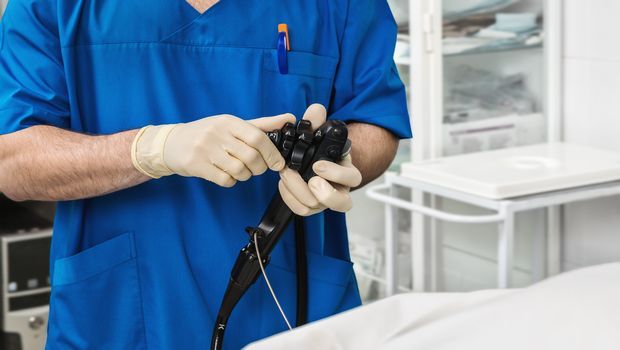Existing Reprocessing Techniques Prove to be Insufficient for Flexible Endoscopes

Current techniques used to clean endoscopes for reuse are not consistently effective, according to a study published in the February issue of the American Journal of Infection Control, the official journal of the Association for Professionals in Infection Control and Epidemiology (APIC). The findings of this study support the need for careful visual inspection and cleaning verification tests to ensure that all endoscopes are free of damage and debris before they are high-level disinfected or sterilized and used on another patient.
“APIC is concerned about the risk of infections related to endoscopic procedures, said Linda Greene, RN, MPS, CIC, FAPIC, 2017 APIC president. “This study reinforces the importance of having strong infection prevention and control programs at all types of facilities, led by highly trained infection preventionists, to ensure that facilities are following the latest evidenced-based guidance.”
Currently, flexible endoscopes, including gastrointestinal, urological, and respiratory endoscopes, are reused following cleaning and high-level disinfection. However, results from the new study conducted by Ofstead & Associates, Inc., suggest that even more rigorous reprocessing techniques of endoscopes are not consistently effective, and organic residues often remain.
“Understanding issues with the effectiveness of reprocessing techniques is critically important as institutions seek to improve the quality of endoscope cleaning and disinfection,” said lead study author Cori L. Ofstead, MSPH, of Ofstead & Associates, Inc. “Even though top-notch methods were used, the endoscopes in this study had visible signs of damage and debris, and tests showed a high proportion were still contaminated.”
Using a longitudinal study design, Ofstead, et al. performed three assessments of 20 endoscopes over a seven-month period. The assessments involved visual inspections with a tiny camera, microbial cultures, and biochemical tests to detect protein and adenosine triphosphate (ATP) – a marker that identifies organic matter. These assessments were used to identify endoscopes that required further cleaning and maintenance.
During the final assessment, the researchers found that all 20 endoscopes examined had visual irregularities, such as fluid, discoloration and debris in channels. Furthermore, samples from 12 of 20 reprocessed endoscopes (60 percent) had microbial growth, indicating a failure of the disinfection process. Of note, endoscopes reprocessed using current recommended guidelines and those that were cleaned at least twice before high-level disinfection exhibited similar culture results.
Further results indicated that about 20 percent of endoscopes in each group exceeded post-cleaning benchmarks for ATP and protein residue. Moreover, ATP levels were higher for gastroscopes, which are used for upper GI procedures, than the endoscopes used for colonoscopy. “Since the same technicians used the same techniques to clean and disinfect these scopes, the findings and our visual observations suggest that something is happening to gastroscopes during procedures that changes the surfaces and causes reprocessing failures,” says Ofstead.
This study comes on the heels of a 2015 report of Carbapenem-resistant Enterobacteriaceae (CRE) infections related to Endoscopic Retrograde Cholangio-Pancreatography (ERCP) duodenoscopes - devices that are threaded through the mouth, throat, and stomach into the top of the small intestine (duodenum) for examinations and treatment. No breaches in reprocessing were identified and yet infections related to the duodenoscopes were uncovered, raising concerns that current reprocessing techniques were ineffective, and illuminating the challenges in reprocessing of such intricate medical devices.
“The finding of residual fluid in 95 percent of endoscopes tested was significant because moisture fosters microbial growth and the development of biofilm-which can be difficult or impossible to remove,” said Ofstead. “This confirms the importance of cleaning, disinfecting, and drying to ensure patient safety.”
“Longitudinal assessment of reprocessing effectiveness for colonoscopes and gastroscopes: Results of visual inspections, biochemical markers, and microbial cultures,” Cori L. Ofstead; Harry P. Wetzler; Otis L. Heymann; Ellen A. Johnson; John E. Eiland; and Michael J. Shaw appears in the American Journal of Infection Control, Volume 45, Issue 2 (February 2017).
Source: APIC
The Sterile Processing Conference Survival Guide: How to Make the Most of Your Next Event
March 25th 2025From expert speakers to cutting-edge tools, sterile processing conferences, like the 2025 HSPA Annual Conference and the SoCal SPA's Spring Conference, offer unmatched opportunities to grow your skills, expand your network, and strengthen your department's infection prevention game.
Redefining Material Compatibility in Sterilization: Insights From AAMI TIR17:2024
March 24th 2025AAMI TIR17:2024 provides updated, evidence-based guidance on material compatibility with sterilization modalities. It offers essential insights for medical device design and ensures safety without compromising functionality.
The Latest on CLABSIs and CAUTIs: Evidence-Based Approaches for Infection Prevention
February 27th 2025Health care–associated infections like CLABSIs and CAUTIs threaten patient safety. Learn evidence-based strategies, new technologies, and prevention protocols to reduce these infections and improve outcomes.